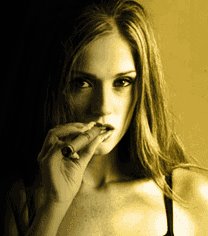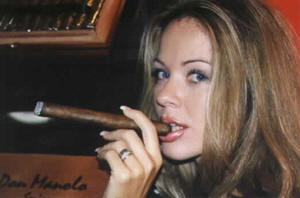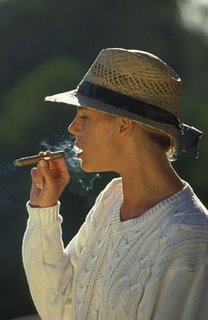
Curing Tobacco
Curing Tobacco: a Necessity
Like many plants, green tobacco is 90 percent water. After being harvested, and before going to the barn, the tobacco has faded a little and the water content is about 80%. It is still too much water for fermentation and the curing is necessary to lower this rate to about 25%. To get 100 lb. of "dry" tobacco, the curing has to eliminate about 40 gallons of water. A full barn of tobacco will need millions of cu. ft. of air to drain off this water! Whatever the curing process is, the barn has to be ventilated!
Change the Nature
If you let green tobacco dry naturally, the color will turn yellow first, then brown. To modify this natural transformation, and to get a different result, a special process has to be applied.
Curing Process
Once harvested, the tobacco must be cured without delay in order to start the stabilization of the material. Without curing, the tobacco would dry and turn to dust as any vegetable. There are four main processes : Flue Curing, Fire Curing, Air Curing and Sun Curing. The last one does not need a curing barn. Cigar tobaccos are generally air-cured, but some light wrappers are flue-cured.
Air Curing
Cigar tobaccos are mainly air-cured (or dark air-cured). They dry in a closed barn with a natural circulation of air. This process is longer than any other but it is the most natural. However, if the air is very humid (in some countries, or during the night), the barn is heated with smokeless fires (made with gas or coal) in order to avoid rotting and to accelerate the process a bit.
Fire Curing
During fire-curing, the barn is really a smokehouse! Wood fires are kept burning in the barn. Smoke is everywhere. The tobacco turns black and shiny. It is impregnated with a nice smoke smell. This process is used in Kentucky and others places that try to match the product (Malawi, Italy). Fire-cured tobaccos are mainly used in roll-your-own , pipe tobacco and dark cigarettes.
Flue Curing
The flue-curing consists of heating the air in a very well closed barn. An outside fire blows hot air (very hot!) into metal pipes running into the barn. There is no direct contact between the fire and the tobacco, the hot pipes just heat the inside air. This process is used for curing Virginia tobacco for cigarettes and Connecticut type wrappers. The goal is to fix the color on yellow to get bright tobaccos.
Air or Fire Curing?
Indonesian tobaccos are often classified as fire-cured, even if they are air-cured. As the growers have to help the curing with fire, the tobaccos are so classified for customs purpose, having the advantage of a preferred duty tariff. It is a way to help the exports of developing countries.
Sun Curing
Oriental tobaccos are sun-cured. No barn, nothing but the sun! The tobacco goes out very yellow and keeps all its sugar content. It is generally a very short tobacco. Leaves are 2 or 3 inches large. The taste is sweet. This tobacco is used for blond cigarette, pipe and short filler cigars. The main producers are Greece, Turkey, and Bulgaria. All the countries around these three are also growing oriental tobacco.
Hanging tobacco leaves
For curing, tobacco leaves have to be hung in the barn. The old manner was to thread leaves with a needle on a thin string, one by one. Now there are sewing machines. Leaves are put two by two in a rail and are sewn automatically when pressing the petiole against the rail. The string is attached to a slat that is put on supports in the barn. The barn is filled up from top to bottom, section by section.
- Big Mike
www.bigmikescigars.com


